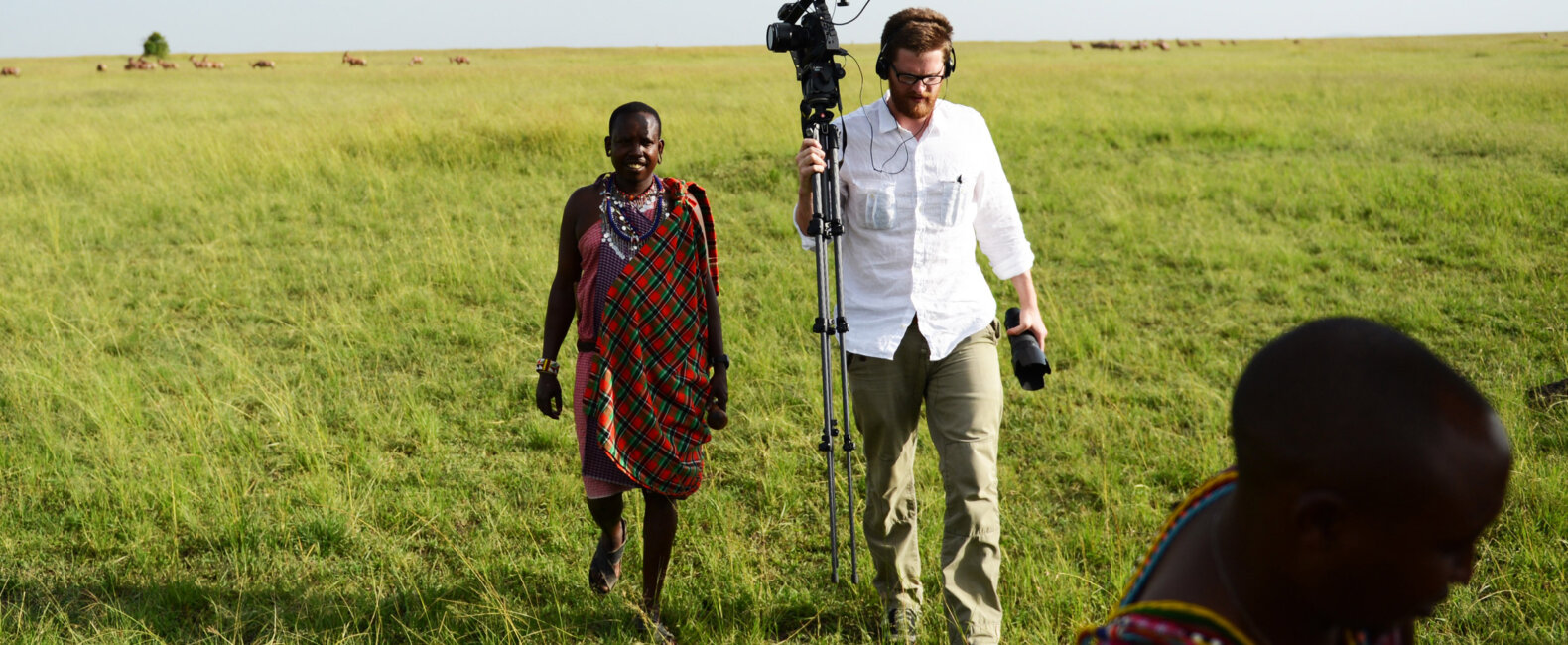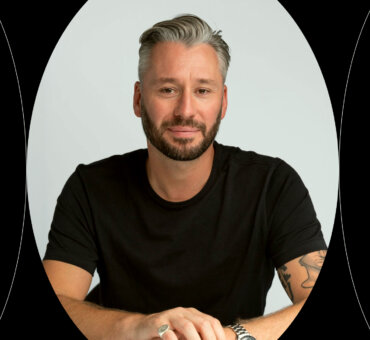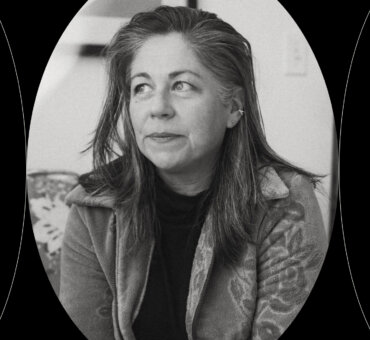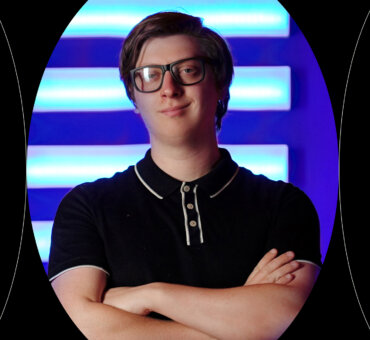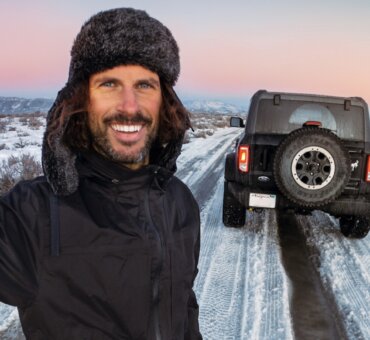We first heard about Joe Callander when he made it onto Filmmaker Magazine’s 25 New Faces of Independent Film in 2014. His story caught our attention. After taking a dead-end customer service job at a leather company in Texas, Joe not only worked his way into a filmmaker-in-residence position, but he also convinced his company to fund a full-length documentary that is now making the festival rounds and getting a lot of attention.
Joe’s career path has been unique, convoluted, difficult, and ultimately rewarding. “If you’re going to make it as a filmmaker, you’ve got to be prepared to walk through hell,” Joe told us. “Filmmaking is very difficult. You have to struggle, and you have to endure the pain, and you have to fail a lot. If you’re not willing to do that, then you’re not going to make it as a filmmaker.”
We recently talked to Joe about his career, his failures, his strategies for operating as a one-man crew, and his recent optimism about the future. We think you’ll dig his story.
Here’s Joe.

Okay, let’s start from the beginning. How did you become a filmmaker?
About five years ago, I was working a marketing job, and I realized I didn’t want to do that another day, let alone for the rest of my life. So I quit. I got a few people together, and we went to Bangkok to make a documentary about a guy I’d met a few years earlier. [Gary] is this Vietnam vet who is using his GI Bill to study abroad, turning his life into this lifelong learning process. I decided to make a documentary about him, and that was the beginning of my documentary filmmaking career.
Did you know filmmaking would be your career?
Absolutely. That’s what I’ve always wanted to do, although there were times when it didn’t seem like something I could do. There didn’t seem to be a way to make money. It didn’t seem like a realistic option until I hit about [age] 25, and then I was like, “All right, I need to start making some choices about how the rest of my life is going to look.”
When you quit that marketing job, did you think filmmaking had become a realistic option? Or were you just like, “I don’t even care. I’m gonna give it a try”?
Basically I was like, “I have to do this because the only thing worse than doing it and failing, is not doing it and wondering what would have happened.”

I read that for your documentary about Gary, you shot 250 hours of footage and ended up making a 17-minute short. I think you said that mathematically, you used zero percent of the footage.
It’s true. And I’m still not done. I’m going to recut the thing into a feature and submit it to Sundance next year. At this point, I just can’t stop until I’ve pushed this thing to the top of the mountain. The problem was the film was supposed to be this great story of redemption because this guy has been through so much. He was going to get his Ph.D., and it was going to be really inspiring, but that’s not what happened when I got on the ground over there.
So your plan was to shoot as much footage as possible and figure it out as you went?
The only thing I knew at that time was that I didn’t know what I was doing. So I tried to cover my ass by keeping the camera on. I brought a friend with me who’d gone to school for video journalism, and I made him run the camera because I knew I didn’t want to screw it up. Turns out he didn’t know what he was doing either, so he screwed it up for me.
Really though, we were just four young and inexperienced guys out there in the wind. We all showed up and tried as hard as we could and it was the most fun and exhilarating time of my life. I guess in more human terms, you could hardly call it a failure. It was the closest thing to war I ever hope to experience, and to this day I still have a unique relationship with the guys that showed up for me and worked on that film.

Did you learn anything through making that first documentary? If you went back and did it again, would you do it differently?
Oh God, I would do a lot of things differently. For one thing, I would try to do everything myself, which is what I do now. The only reason I was able to make anything at all out of what we shot is because I was so completely obsessed with organizing all the footage. I still have a logbook under my bed that’s 600 pages long. I transcribed 30 interviews word for word. Logged every minute of footage. Took notes. I basically have the whole 250 hours memorized at this point, which is the only reason I’m able to go back and do something with it this much later.
But maybe the biggest thing about making that film is that it got me accustomed to failure. I submitted it to Sundance four times, and they rejected it four times. But failure is a gigantic part of filmmaking. You have to learn how to deal with it. Ultimately what that first documentary taught me was a great way not to make a movie, which was probably the best education I could have gotten. Fast-forward a couple of years to the feature I just did, and I used literally 80 percent of everything I shot.
What did you learn? Do you script it out now?
I’ve started shooting differently. I happened to become friends with this guy named Jason Tippet. He shoots everything on these locked-down tripod shots, and I could tell immediately that it was the opposite of what I’d been doing, all of this shaky, handheld stuff. He put so much thought into every frame, every movement. I knew I wanted to move toward that. Now I shoot almost everything on a tripod, which isn’t common with documentary. I use a tripod and prime lenses. And when you do that, it forces you to start thinking more in terms of scenes, which is a more narrative approach to documentary. It’s a lot more sitting and writing on the front end, but a lot less stress in the editing room.
So I know you ended up getting hooked up with the Saddleback Leather Co. How did that all come about?
When that first feature film failed, and when the money ran out, I was in L.A. and I needed some work. I knew about Saddleback Leather because I owned one of their briefcases. I heard they were hiring someone for customer service. So I started working in customer service just to keep the lights on while I figured out my next move. I ended up getting to know the owner, Dave Munson, pretty well, and he found out I had a marketing background and I was working toward being a filmmaker. So I ended up moving into marketing, and then Dave was like, “Why don’t you just be a filmmaker for me and do whatever you want?”
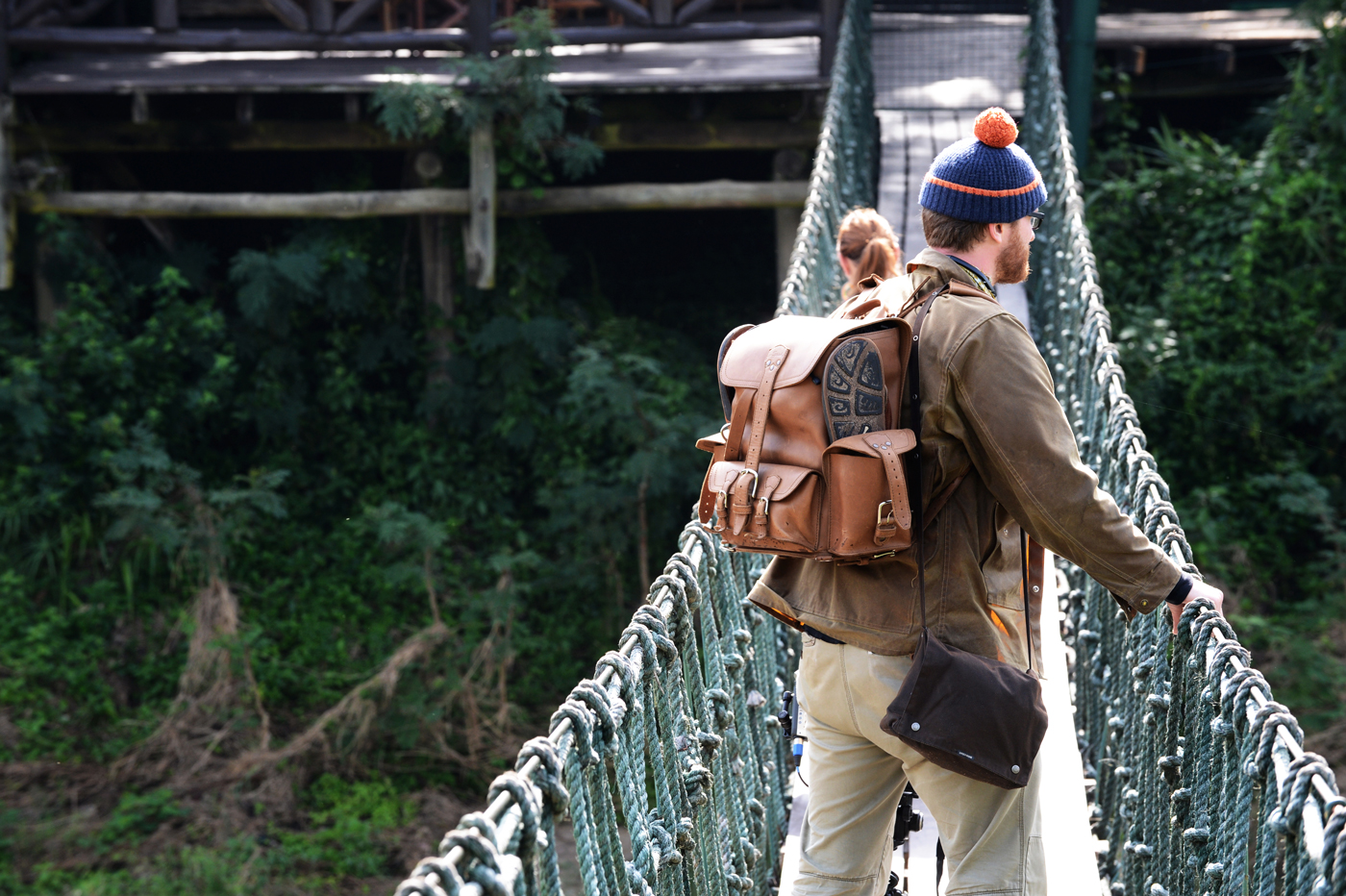
That’s amazing. Had that been your plan all along?
I had no plan. And honestly, when it happened I was like, “Are you sure this is what you want to do?” But Dave is the type of business owner who wants his employees to be doing what they love. So he was like, “Yeah, let’s give it a shot and see what happens.”
How did you get them interested in funding your recent feature?
Well, they do a lot of relief work in Africa, and sometimes I go over there with them just to tell a few stories. On one of the trips, I met this kid named Kwasa. He had a real outgoing personality, so I told Dave, “Listen, I’m going to spend a few days filming this guy, and let’s see where it goes from there.” It ended up taking three different trips. The first time I came back with an 11-minute short, and Dave and his wife were like, “This is great!” The next time, I came back with a 50-minute cut. I showed it to them, they loved it, and I was like, “Okay, I need to go back one more time to make this feature length. They said, ‘All right, let’s do it.’”
It’s pretty amazing how you turned what some people might see as a dead-end customer service job at a leather company into a filmmaking career.
You have a Plan A until it fails, and then you make a new Plan A. This definitely isn’t the way I thought it would all work out, but I was getting there either way.
Has there been a moment when you’ve felt like, Yes, this is working! When you’ve known you’re on the right track?
Yeah, definitely. It happened when I got a short film called Tim and Susan Have Matching Handguns into Sundance this year. When I got that email, it was mostly just a relief. I was like, “Okay, I’m not delusional. The last five years were worth it, and I should keep going.” I was in Africa at the time, finishing up the feature. Getting an email like that is not a feeling you can describe with words.
Did that feeling last?
I’m feeling more optimistic these days. I understand what people mean when they say Sundance can make a career. The film I submitted was 90 seconds long, so it was a bizarre experience from that angle. I guess I just feel like I can do it. I can turn this into something that’s worthwhile and keeps the lights on.
You said earlier that one of the things you learned from that first film was that you want to do everything yourself. Can you talk to me more about what it’s like being a one-man crew?
I wanted to have more control. The way it happened, though, was I was in L.A., and Dave asked me to relocate to San Antonio, which was a risky move for me. When I got there, Dave bought be a bunch of gear and said, “This is it. Make it work.” I said, “I need a sound guy.” And he said, “We’re not getting one, so figure it out.” It was actually great for me. I had to get so inventive. The L.A. mind-set is, “There’s a certain way to do things. You have a crew. You definitely cannot make a feature with less than two people. That’s just the way it is.” I didn’t have that, so I had to get really, really creative with how I did stuff.
Do you remember any specific circumstance where you had to get creative?
I mean, all the time. The whole thing is just ridiculous. I have two DSLR camera bodies, and I like to shoot scenes with two cameras. I set the frame on one, and then I go over and set the frame on the other. I check the audio, and then I just hope the batteries don’t die. Then I’m filming these portraits of people, and I don’t even speak their language. It’s just ridiculous. I’ve gotten better at it though. I’ve gotten to the point where I’ve got a pretty lean kit. Basically, just two bodies, two tripods, three lenses, a couple of lav microphones, and a shotgun mic. You make it work.

I think one of the biggest benefits to working alone, though, is there’s no one to say, “That’s a stupid idea.” I think because of that, I’ve gotten to the point where I’m trying out some pretty wild stuff. Some of it doesn’t work, but some of it works pretty well. I think working alone has allowed me to develop a lot faster than I would have otherwise.
Is this how you think you’ll continue working?
No. I don’t really want to do this any longer than I have to because it’s very physically demanding, and it’s stressful mentally, and there are just so many hassles to deal with. I enjoy it in a masochistic way, but it’s really not an enjoyable way to work.
Do you feel like the struggle has made the work better?
If you’re going to make it as a filmmaker, you’ve got to be prepared to walk through hell. Filmmaking is very difficult. You have to struggle, and you have to endure the pain, and you have to fail a lot. If you’re not willing to do that, then you’re not going to make it as a filmmaker.
Everything I’ve seen of yours has a very specific tone. Have you ever been tempted to make something more mainstream, something less weird that you knew would sell?
Honestly, my weirdness is something I’ve tried to fight in the past. I thought it would ruin my life. I have this compulsion to push things and make them stranger and stranger, and funnier and funnier. For a long time, I was trying to suppress that. But when I suppressed it, I’d get rejected. I ended up getting to the point where I didn’t care anymore. I just decided I was going to do what I was going to do. And that’s when I finally hit a moment of grace and started going somewhere.
How long did it take you to get to that point?
Probably four attempts at a feature, three or four short films. Filmmaking is a long process. It’s more about grit than anything. Luckily, I’ve stuck around just long enough that I’ve started to develop my own voice. It’s to the point where my voice is something people are starting to ask for.
That’s huge. Maybe that’s a good definition for success: “Having somebody who wants to pay you to be yourself.”
Right? Imagine that.
We love how Joe was able to turn a seemingly dead-end job into an ideal filmmaking situation and a career-making opportunity. The lesson is an old one, but it’s one that’s easy to forget: Give your all wherever you are. You never know where something might lead.















































































